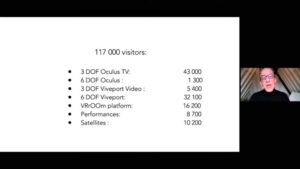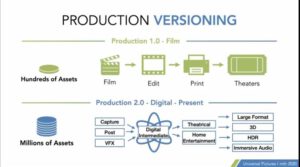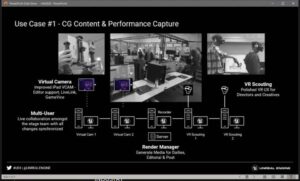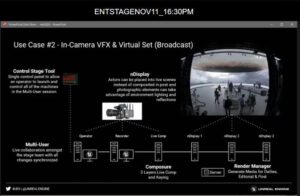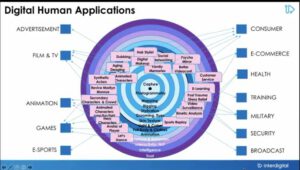Like so many media events this year, MediaTechCon 2020 also had to be realized as an online streaming event. Instead of walking between sites on the Studio Babelsberg lot in Potsdam, visitors entered a virtual hub on the internet. Here they could follow lectures and panels by switching between entertainment and industry channels mirroring the established organization of the real-world conference stages.
Right at the beginning of the conference, an impressing line-up of lectures and expert discussions reflected on the actual situation of media events under pandemic conditions. Art curators, trade show organizers and concert promoters reported their experiences with digital replacements of real-world events. Trade shows and concerts kept up the brand spirit with broadcasting and streaming events. Art exhibitions and stage performances turned to VR for preserving the events’ special attraction value.
While this opening made VR shine as a platform of its own, the two conference streams presented the medium as a tool for digital optimization of pre-established industrial workflows. The industry channel featured the development framework of ‘industry 4.0’ and showcased streamlined mechanical engineering projects based on mixed reality concepts. The entertainment channel focused on the complete digitization of film and TV production chains, now traded under the term of ‘production 3.0’.
By integrating game engines into the film production workflow, it is now possible to play out digital effects in-camera for live-action shooting. LED walls replace traditional rear-projection techniques and green screens. After the digitization of special effects, pre-production and post-production, now film shooting itself gets in the digital production line.
But cost reduction in production and distribution comes with a caveat for traditional screen media. The product value for films, TV series and games diminishes under now dominating inflationary streaming conditions. And further automatization like AI-supported customer profiling and digital human applications lead deeper into uncanny valleys – legally as well as humanly. The conference offered discussions on these issues only for backwards-compatible media and engineering frameworks where digitization now reaches completeness. Concrete use cases with high impact on our future, like Facebook’s Quest2 strategy for consumers or HP’s ReverbG2 Omnicept approach for enterprises, were handled rather irresolutely like peripheral incidents.
After the vigorous opening for virtualization, this year’s MediaTechCon fell back into a flat world, now levelling up for the digital game. I cannot say how far this originates in the enforced streaming format of the event itself or in the (digitized) mindset of traditional media production structures. In the first case, this event may turn back to a more palpable ‘new normal’ after the pandemic. In the second case, this platform for innovation in media technologies risks turning its back to a future, that is already gaining traction today.


